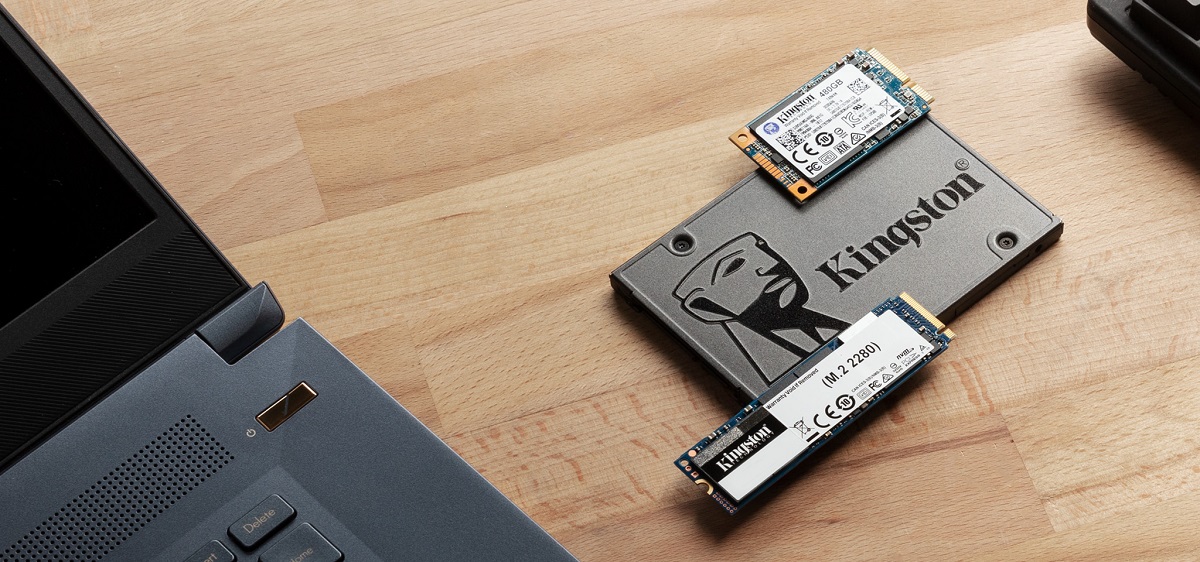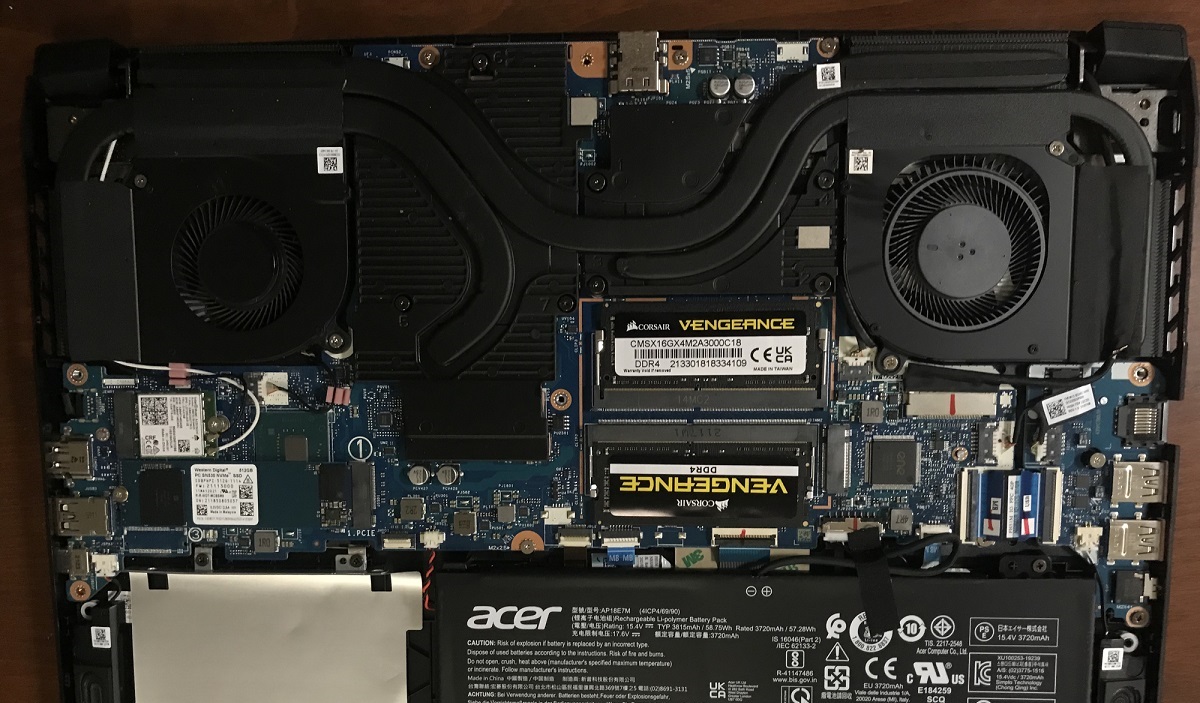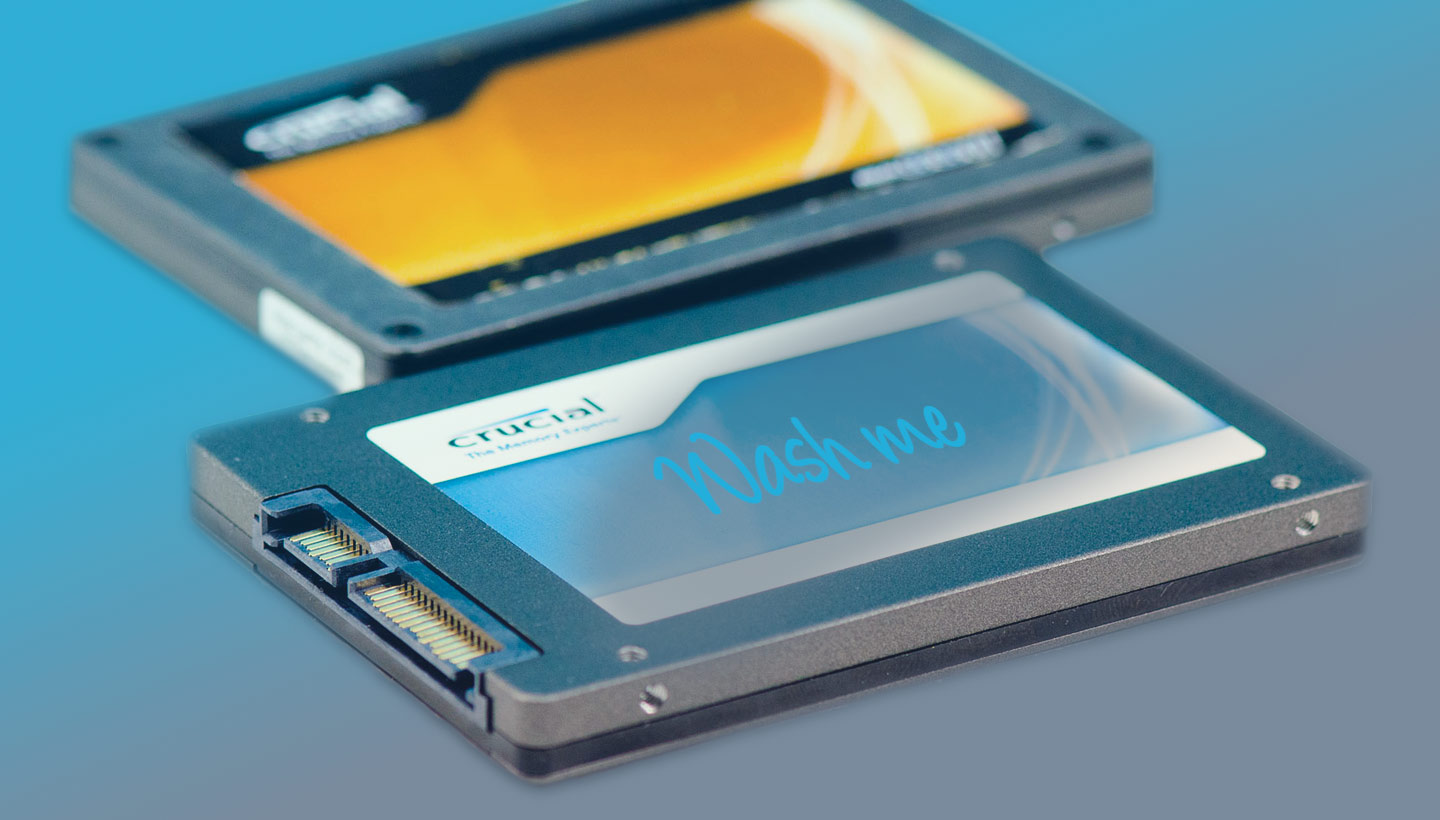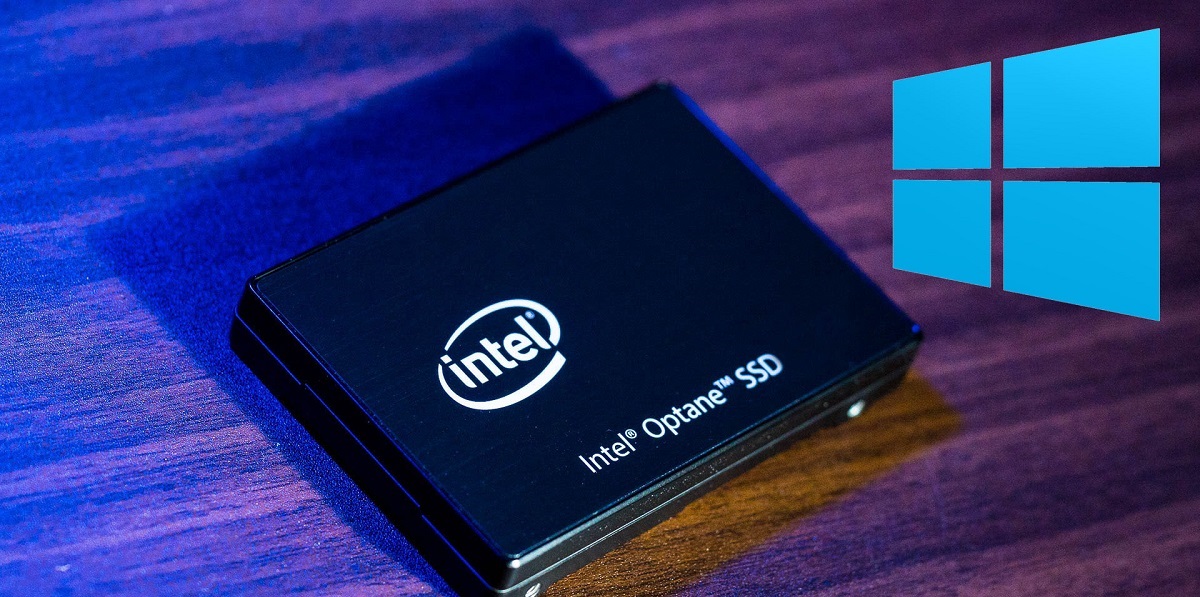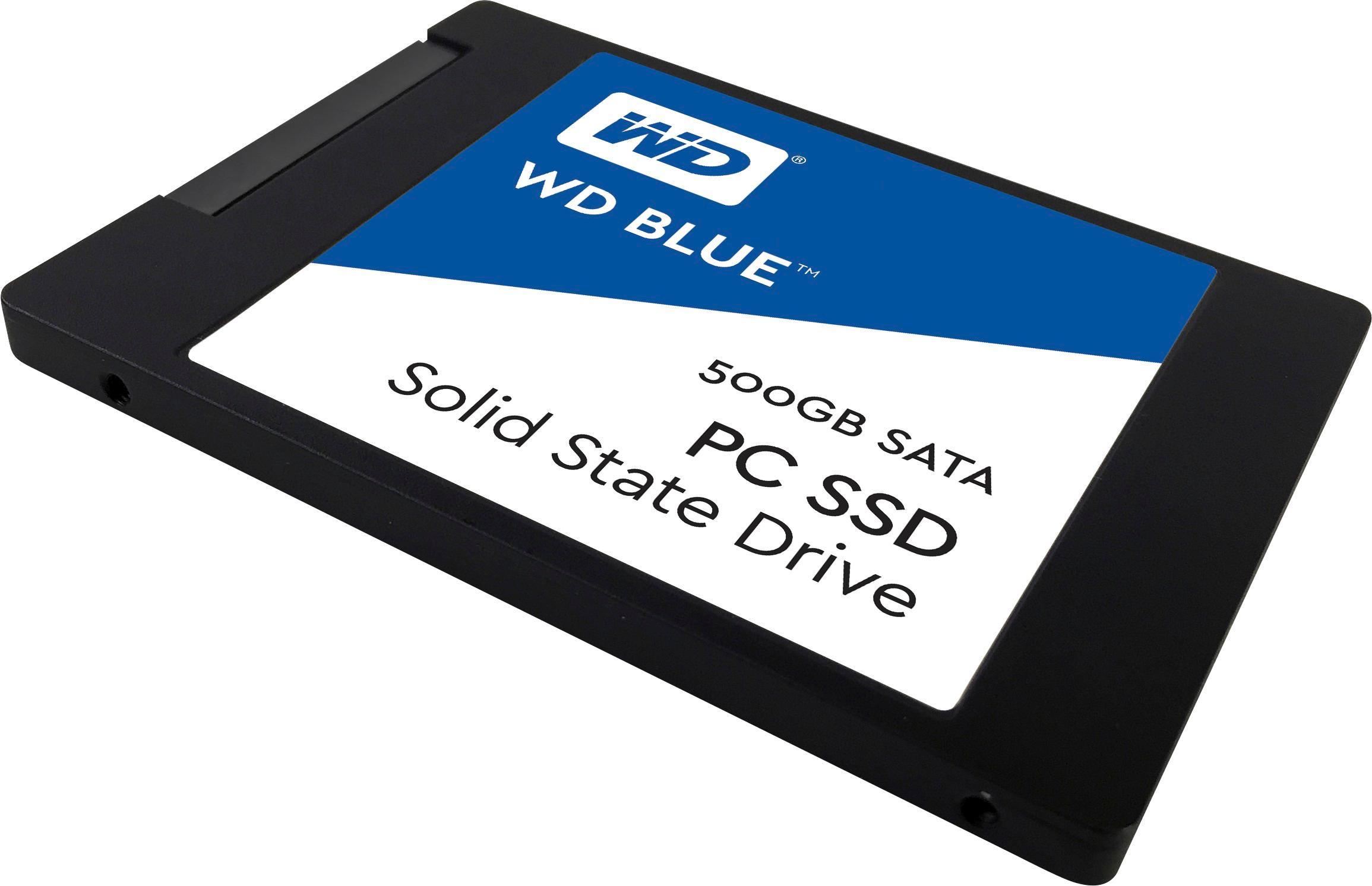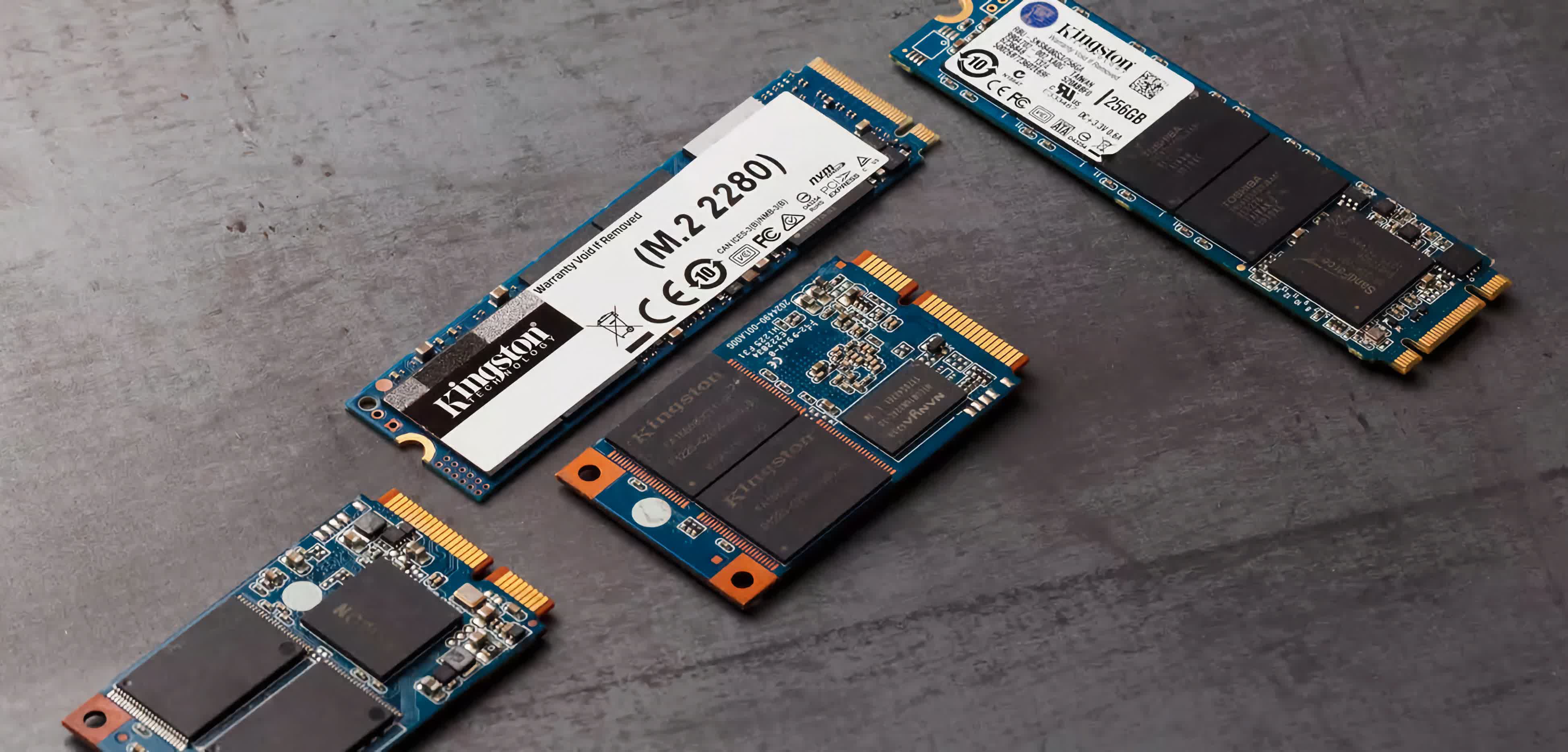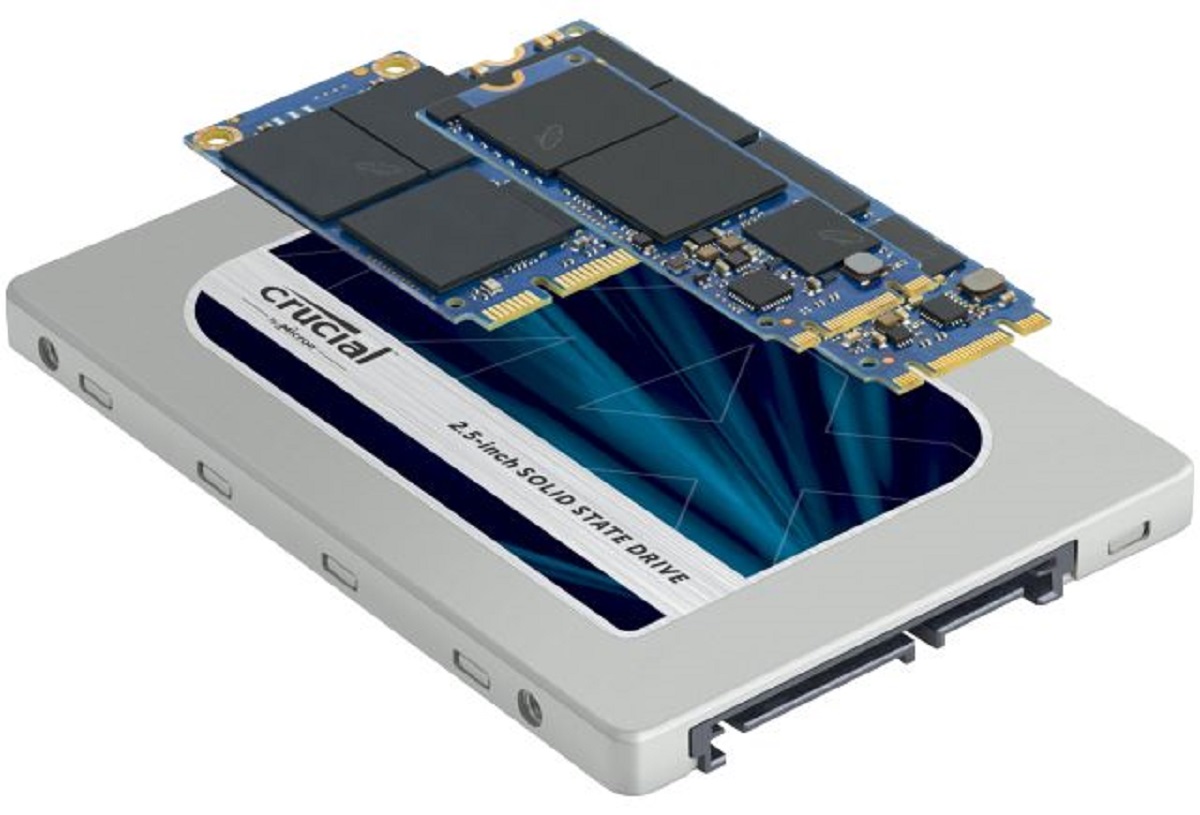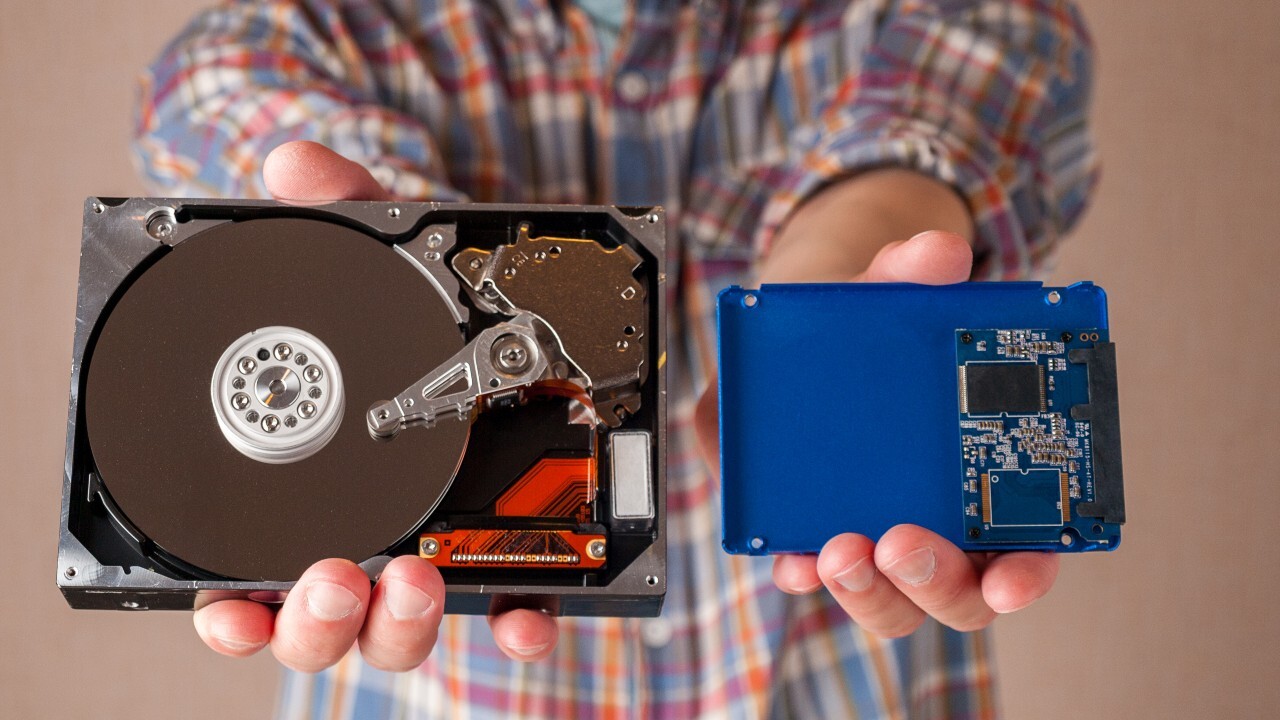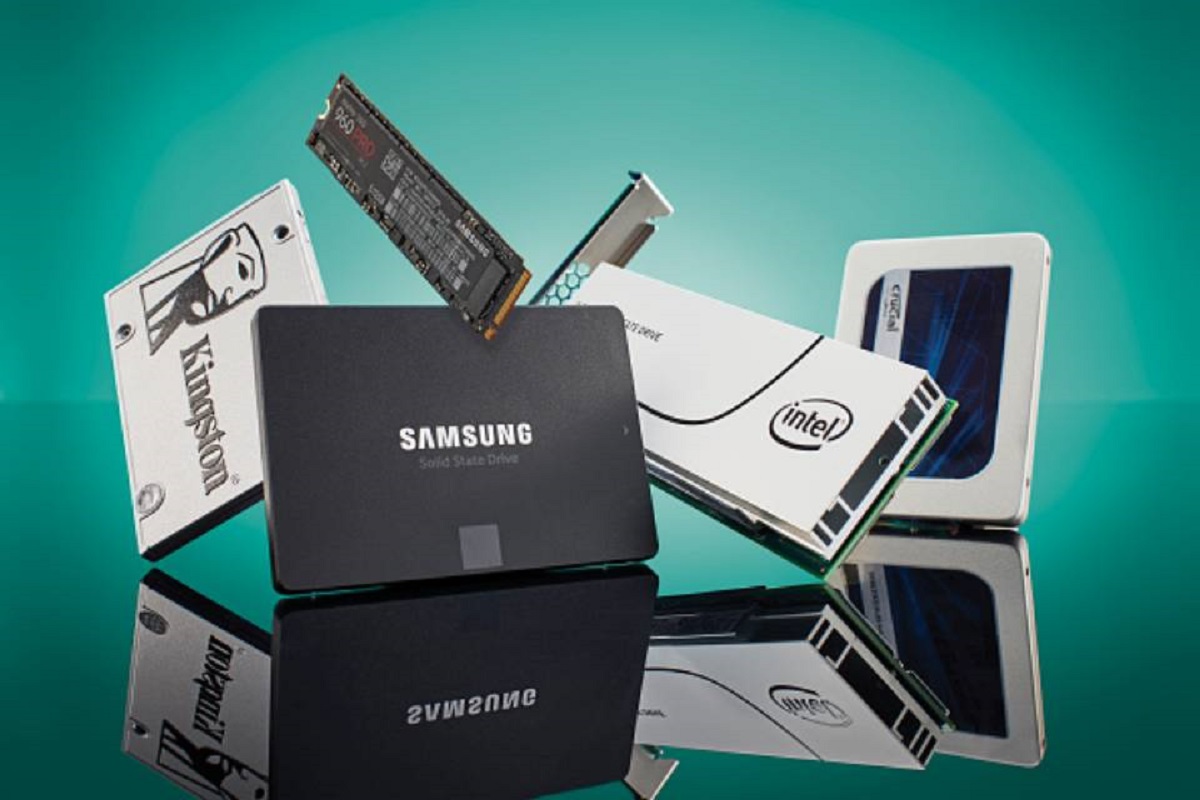Introduction
When it comes to computer storage, solid-state drives (SSDs) have become increasingly popular due to their faster speeds and reliability compared to traditional hard disk drives (HDDs). However, to ensure the optimal performance and lifespan of an SSD, it is crucial to understand and utilize a feature called TRIM.
TRIM, short for ‘Trimming’, is a command that helps maintain the performance of an SSD over time. It plays a significant role in preventing performance degradation and extending the lifespan of the drive. Understanding how TRIM works and why it is important can help you maximize the benefits of using an SSD.
In this article, we will delve into the details of TRIM and explore its significance in SSD optimization and maintenance. We will discuss how TRIM works, why it is essential for SSDs, and how you can enable and check its status on your device. Whether you are a tech enthusiast or a casual user, understanding TRIM will enable you to make the most out of your SSD investment.
So, let’s dive into the world of TRIM and discover how it can help unleash the true potential of your solid-state drive.
What is TRIM?
TRIM is a command that is specific to solid-state drives (SSDs) and is designed to improve their performance and longevity. It is an essential feature that helps SSDs maintain their speed and efficiency over time.
Traditionally, when data is deleted from a storage device, the operating system marks the space previously occupied by that data as available for new data to be written. However, on SSDs, the process is different. Due to the nature of flash memory technology, when data is deleted, the SSD cannot directly overwrite the previously occupied space. Instead, it needs to erase the entire block of memory where the data was stored before writing new data.
This process, known as “garbage collection,” can lower the overall performance of an SSD as it needs to allocate resources and perform extra write operations. This is where TRIM comes in. When the operating system sends a TRIM command to the SSD, it notifies the drive that a particular block of data is no longer in use. The SSD can then proactively erase and prepare the block for future write operations, eliminating the need for on-the-fly garbage collection.
In simpler terms, TRIM allows the SSD to efficiently manage the storage space by wiping out the data that is no longer needed. By doing so, TRIM helps prevent performance degradation that can occur over time as the drive becomes filled with deleted but not yet erased data.
It’s important to note that TRIM is not a user-initiated command. Instead, it is automatically activated by the operating system and interacts directly with the SSD firmware in the background. The operating system sends TRIM commands during idle periods, allowing the SSD to carry out the optimization tasks without impacting the overall system performance.
Now that we have a clear understanding of what TRIM is and how it functions, let’s explore why it is crucial for the performance and longevity of SSDs.
How does TRIM work?
TRIM operates at the operating system level, in collaboration with the SSD firmware, to maintain optimal performance. The process involves three main components: the operating system, the file system, and the SSD firmware.
When files are deleted on the operating system, the file system marks the space previously occupied by the deleted files as available for reuse. However, this does not immediately trigger the SSD to erase the corresponding data blocks. Instead, the SSD marks these blocks as “invalid” or “free” for later use. This distinction is important because it enables the SSD to optimize the erasure process.
During idle periods, the operating system initiates a TRIM command, which notifies the SSD firmware about the unused data blocks. The SSD firmware then schedules these blocks for erasure, and during subsequent write operations, it can quickly write new data without the need for time-consuming erase operations. This proactive management of data blocks significantly enhances the performance and longevity of the SSD.
Furthermore, TRIM helps prevent the phenomenon known as write amplification. Write amplification occurs when the SSD firmware has to perform additional write operations due to the lack of properly managed free space. By utilizing TRIM, the SSD can maintain a more efficient allocation of free space, reducing write amplification and prolonging the lifespan of the drive.
It is important to note that the effectiveness of TRIM depends on the SSD’s support for the command. While most modern SSDs include TRIM support, it is essential to ensure that both the SSD and the operating system are compatible and enabled for TRIM functionality.
Now that we have explored how TRIM works to maintain SSD performance and minimize write amplification, let’s delve into why TRIM is crucial for the optimal functioning of SSDs.
Why is TRIM important for SSDs?
TRIM is crucial for the optimal functioning of solid-state drives (SSDs) due to several key reasons:
1. Performance Optimization: Without TRIM, deleted data resides on the SSD, taking up valuable storage space. As more data is written to the drive, the available space diminishes, leading to decreased performance. TRIM helps maintain the SSD’s performance by efficiently managing data blocks and ensuring the drive has ample free space for new data. By proactively erasing unused blocks, TRIM minimizes the need for time-consuming erase operations during write processes, resulting in faster and more consistent performance.
2. Preventing Performance Degradation: Over time, if an SSD is not properly optimized, its performance can degrade significantly. This degradation is caused by the increased write amplification, where the SSD firmware needs to perform additional write operations due to inefficient data block management. TRIM reduces write amplification by keeping the drive’s free space properly allocated and minimizing the need for unnecessary write operations. This, in turn, helps maintain the SSD’s original performance levels and extends its lifespan.
3. Extending SSD Lifespan: Unlike traditional hard disk drives (HDDs), SSDs have a limited number of write cycles before their cells degrade. Excessive write operations, especially when coupled with inefficient data management, can accelerate wear and reduce the SSD’s lifespan. TRIM plays a vital role in prolonging an SSD’s lifespan by minimizing write amplification, preventing unnecessary data movements, and ensuring optimal data block allocation. By allowing the SSD to function more efficiently, TRIM helps maximize the endurance of the drive.
4. Enhanced Data Security: SSDs, like HDDs, often incorporate mechanisms to protect stored data. However, when data is marked as deleted but not yet erased, it can potentially be recovered through specialized techniques. TRIM helps enhance data security by promptly erasing unused blocks, ensuring that deleted data is permanently removed. This feature can be particularly beneficial when disposing of or repurposing an SSD, as it helps prevent unauthorized access to sensitive information.
Overall, TRIM is critical for SSDs as it optimizes performance, prevents degradation, extends lifespan, and enhances data security. By enabling and utilizing TRIM, users can ensure their SSDs operate at their full potential, providing faster and more reliable storage for their computing needs.
Benefits of using TRIM with SSDs
Utilizing TRIM with solid-state drives (SSDs) offers several significant benefits that contribute to improved performance, longevity, and overall user experience:
1. Enhanced Performance: TRIM helps maintain optimal performance by freeing up space and reducing the need for time-consuming erase operations. By proactively erasing unused data blocks, TRIM enables SSDs to write new data faster, resulting in improved read and write speeds. This ensures that your SSD operates at its peak performance, delivering faster boot times, shorter application load times, and smoother overall system performance.
2. Prolonged Lifespan: SSDs have a limited number of write cycles before they wear out. By reducing write amplification and effectively managing data blocks, TRIM helps extend the lifespan of your SSD. This means your drive will last longer before experiencing performance degradation or reaching its maximum write limit. By using TRIM regularly, you can maximize the endurance of your SSD and get the most out of your investment.
3. Consistent Performance Over Time: Without TRIM, an SSD can suffer from reduced performance as more data is written and deleted. These “dirty” blocks and fragmented data can slow down read and write operations. TRIM prevents this performance degradation by maintaining a clean and efficiently organized storage space. By continuously optimizing the drive’s data organization, TRIM ensures that your SSD performs consistently, even as you use it over an extended period.
4. Improved File Deletion and Data Security: When you delete files or format a drive, TRIM helps ensure that the data is effectively erased and cannot be recovered. By promptly informing the SSD firmware about the deleted data, TRIM enables the drive to erase and sanitize the corresponding blocks, preventing unauthorized access. This offers an extra layer of data security, particularly when disposing of or selling your SSD.
5. Reduced Write Amplification: Write amplification occurs when the SSD firmware performs additional write operations due to inadequate free space management. TRIM helps minimize write amplification by ensuring that the drive maintains sufficient free space and efficiently allocates data blocks. By reducing the number of unnecessary write operations, TRIM helps minimize wear and tear on the SSD, leading to improved performance and longevity.
By utilizing TRIM with your SSD, you can experience faster and more consistent performance, prolong the lifespan of your drive, and enhance data security. It is important to note that TRIM requires both SSD and operating system support to be fully effective. Ensure that TRIM is enabled and regularly check for firmware updates to maximize the benefits of using TRIM with your SSD.
TRIM support in different operating systems
TRIM is a vital feature for maintaining the performance and longevity of solid-state drives (SSDs). However, the level of TRIM support can vary depending on the operating system in use. Let’s take a look at TRIM support across different platforms:
1. Windows:
– Windows 7 and above: Microsoft introduced TRIM support with Windows 7. The operating system enables TRIM by default for most modern SSDs. However, it is always recommended to double-check the TRIM status to ensure it is functioning correctly.
– Windows XP and earlier: TRIM support is not available for these older versions of Windows. If you are using an SSD with Windows XP, TRIM will not be active. However, some SSD manufacturers offer specific utilities to facilitate TRIM-like functionality on these older systems.
2. macOS:
– macOS 10.6.8 (Snow Leopard) and above: TRIM support is built into macOS. However, it is only enabled for specific Apple-branded SSDs. Third-party SSDs require additional steps to enable TRIM support, such as using third-party utilities or terminal commands.
3. Linux:
– Most modern Linux distributions have native TRIM support. However, it is important to check if TRIM is enabled and functioning correctly. The command “fstrim” can be used to manually initiate TRIM on supported file systems. Some distributions may also have automated cron jobs to perform regular TRIM operations.
4. Chrome OS:
– Chrome OS, the operating system used by Chromebooks, has built-in TRIM support. It automatically activates TRIM on supported SSDs without any user intervention.
5. Mobile Operating Systems (Android and iOS):
– Android and iOS have TRIM support at the hardware level. This means that TRIM functionality is built into the SSD itself, rather than being dependent on the operating system. As long as you use a device with an SSD that supports TRIM, the operating system will automatically utilize TRIM for optimal performance.
It is worth noting that even if an operating system supports TRIM, the drive’s firmware and hardware must also have TRIM capabilities. Some SSDs may require a firmware update to fully support TRIM functionality.
With TRIM support varying across operating systems, it is essential to ensure that TRIM is enabled and functioning correctly for your specific setup. Checking the TRIM status and keeping your system and SSD firmware updated will help you make the most out of TRIM and maintain the optimal performance of your SSD.
How to check TRIM status and enable TRIM on your SSD
Checking the TRIM status and enabling TRIM on your solid-state drive (SSD) is essential to ensure optimal performance and longevity. The process varies depending on the operating system and the specific SSD. Let’s explore how you can check TRIM status and enable TRIM on your SSD:
1. Windows:
– Open the Command Prompt as an administrator. Type the command “fsutil behavior query DisableDeleteNotify” and press Enter. If the result is “DisableDeleteNotify = 0“, TRIM is enabled. If it is “DisableDeleteNotify = 1“, TRIM is disabled.
– To enable TRIM, use the Command Prompt and type “fsutil behavior set DisableDeleteNotify 0“. Press Enter to execute the command. Keep in mind that you need administrative privileges for this action.
2. macOS:
– Open the Terminal and type “sudo trimforce enable“. Press Enter and enter your administrator password when prompted. Follow the on-screen instructions to enable TRIM on your macOS system. Restart your Mac after enabling TRIM.
3. Linux:
– To manually check TRIM status, open the Terminal and enter the command “fstrim --dry-run /“. Replace “/” with the mount point of your SSD if it is different. The output will show the number of bytes to be trimmed if TRIM is enabled.
– To enable TRIM, use the command “sudo systemctl enable fstrim.timer” to set up automatic TRIM. This command varies depending on your Linux distribution. Consult your distribution’s documentation for specific instructions.
4. Chrome OS:
– Chrome OS automatically enables TRIM on supported SSDs. No manual intervention is required. However, you can verify the TRIM status on your Chromebook by visiting the “chrome://system” page, expanding the “Filesystem details” section, and checking the “discard” value. If it shows “true,” TRIM is enabled.
5. Mobile Operating Systems (Android and iOS):
– TRIM is automatically enabled on mobile devices that use SSDs. You do not need to take any additional steps to enable TRIM on Android or iOS.
It is important to note that not all SSDs or operating systems may support TRIM. Ensure that both your SSD and operating system have TRIM capabilities before attempting to enable it. Additionally, always keep your SSD firmware and operating system updated to ensure optimal performance and compatibility.
By checking the TRIM status and enabling TRIM on your SSD, you can ensure that your drive is functioning optimally, maintaining high-speed performance, and extending its lifespan.
Best practices for utilizing TRIM effectively
While enabling TRIM is crucial for the optimal performance and longevity of solid-state drives (SSDs), there are some additional best practices to ensure TRIM is utilized effectively:
1. Keep TRIM Enabled: Once you have enabled TRIM on your SSD, it is essential to ensure that it remains enabled. Regularly check the TRIM status on your operating system and confirm that it is functioning correctly. Some updates or changes to the operating system or drivers may unintentionally disable TRIM, so it is important to verify its status periodically.
2. Regularly Update SSD Firmware: SSD manufacturers often release firmware updates that improve overall performance and compatibility, including enhanced TRIM functionality. It is recommended to periodically check for firmware updates specific to your SSD model and apply them to maximize the effectiveness of TRIM.
3. Avoid Overfilling the SSD: Keeping a sufficient amount of free space on your SSD is essential for effective TRIM operation. As the drive becomes near its maximum capacity, the effectiveness of TRIM can diminish, leading to potential performance issues. It is advisable to maintain at least 10-20% free space on your SSD for optimal TRIM functionality.
4. Minimize Deletion and File Movements: While TRIM ensures that deleted data is effectively erased, minimizing unnecessary file deletions and movements can help reduce the workload on the SSD’s TRIM operations. Avoid excessive file deletions and frequent file operations, as these can increase write amplification and impact the efficiency of TRIM.
5. Avoid Defragmenting SSDs: Unlike traditional hard disk drives (HDDs), SSDs do not require defragmentation. In fact, defragmenting an SSD can increase wear and tear on the drive and reduce TRIM efficiency. The operating system and SSD firmware handle data organization on SSDs, so manual defragmentation is unnecessary and can even be detrimental.
6. Use TRIM-supported File Systems: TRIM is most effective when used with file systems that support TRIM commands. On Windows, NTFS and exFAT file systems fully support TRIM, while on macOS, APFS is the recommended file system with built-in TRIM support. When formatting or selecting a file system for your SSD, ensure it is compatible with TRIM for optimal performance.
7. Regularly Optimize the SSD: In addition to TRIM, it is beneficial to run periodic optimization tasks, such as disk cleanup or garbage collection, depending on your operating system. These tasks help organize and consolidate data on the SSD, further improving performance and allowing TRIM to work efficiently.
By following these best practices, you can ensure that TRIM is utilized effectively on your SSD, maximizing its performance, longevity, and overall functionality. Remember to maintain regular backups of your data and consult the specific documentation or support resources provided by your SSD manufacturer for any additional recommendations or specific steps related to TRIM and your SSD model.
Conclusion
TRIM, as a crucial feature for solid-state drives (SSDs), plays a vital role in maintaining optimal performance, preserving longevity, and enhancing data security. By enabling TRIM and utilizing it effectively, users can unlock the full potential of their SSDs.
We explored what TRIM is, how it works, and why it is important for SSDs. TRIM helps SSDs proactively manage data blocks, optimize performance, and reduce write amplification, allowing for faster and more consistent operation over time. The benefits of using TRIM include enhanced performance, prolonged lifespan, improved data security, and reduced write amplification.
Depending on the operating system, TRIM support may vary. It is important to check the TRIM status and ensure it is enabled on your specific platform. Regularly updating SSD firmware, avoiding overfilling the SSD, and minimizing unnecessary file operations are key factors to maximize the effectiveness of TRIM.
Maintaining a sufficient amount of free space on your SSD and avoiding defragmentation are also important considerations. Additionally, utilizing TRIM-supported file systems and running regular optimization tasks can further optimize SSD performance in conjunction with TRIM.
In conclusion, TRIM is a powerful tool that ensures the optimal performance, longevity, and data security of solid-state drives. By checking TRIM status, enabling it, and following best practices, users can unleash the true potential of their SSDs, enjoying faster speeds, prolonged lifespan, and a more reliable storage experience.







